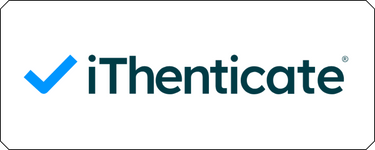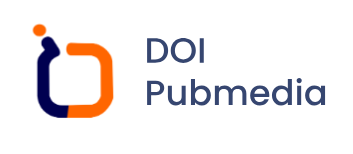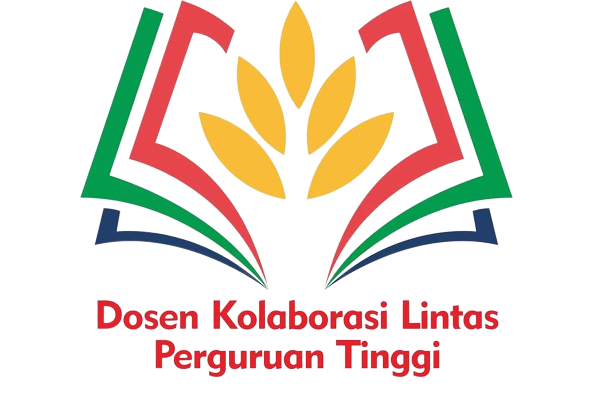SWOT Analysis of Indonesian Public Health Policy Using PCA Method
DOI:
https://doi.org/10.69812/jgs.v1i2.72Keywords:
SWOT Analysis, Policy Evaluation, Healthcare SystemsAbstract
This study aims to analyze the strengths, weaknesses, opportunities, and threats (SWOT) of Indonesian public health policies using the Principal Component Analysis (PCA). Public health in Indonesia has faced numerous challenges, including inadequate infrastructure, uneven access to health services, and emerging infectious diseases. Effective policy formulation is crucial to address these issues, but there is a need for a more structured approach to assess the dynamic factors influencing public health in the country. The purpose of this research is to employ SWOT analysis combined with PCA to provide a more comprehensive and data-driven evaluation of Indonesia public health policies. The research utilizes secondary data obtained from government reports, health surveys, and international health indexes. The data were processed through PCA to reduce dimensionality and identify the key components that most significantly affect the country health system. This statistical approach allows for a more objective identification of critical variables, which are then categorized into the four SWOT. A qualitative assessment is also used to interpret the results and suggest strategic recommendations for policy improvements. The results of the PCA revealed several key factors impacting Indonesian public health, including healthcare accessibility, funding, and the effectiveness of disease prevention programs. The analysis showed that while there are significant strengths in terms of government commitment and international partnerships, there are also notable weaknesses in infrastructure and healthcare distribution. Opportunities for improvement lie in the potential for digital health integration and public-private partnerships, while threats include the increasing burden of non-communicable diseases and natural disasters.
Downloads
References
Aprilianti, R., Messakh, G. C., Asiah, S. N., & Nohe, D. A. (2022). Analisis Regresi Data Panel Pada Kasus Persentase Kemiskinan Di Kalimantan Timur. Prosiding Seminar Nasional Matematika Dan Statistika, 2. https://jurnal.fmipa.unmul.ac.id/index.php/SNMSA/article/view/858
Binuko, R. S. D., & Fauziyah, N. F. (2024). Pengaruh Faktor Ekonomi dan Sosial Terhadap Akses Pelayanan Kesehatan di Rumah Sakit. Jurnal Manajemen Dan Administrasi Rumah Sakit Indonesia (MARSI), 8(2), 123–134. https://doi.org/10.52643/MARSI.V8I2.4182
Booth, A., Purnagunawan, R. M., & Satriawan, E. (2019). Towards a Healthy Indonesia? Bulletin of Indonesian Economic Studies, 55(2), 133–155. https://doi.org/10.1080/00074918.2019.1639509
Chang, H. H., & Huang, W. C. (2006). Application of a quantification SWOT analytical method. Mathematical and Computer Modelling, 43(1–2), 158–169. https://doi.org/10.1016/J.MCM.2005.08.016
Creswell, J. W., & Creswell, J. D. (2018). Research design: Qualitative, quantitative, and mixed methods approaches (Fifth). Sage Publications.
Delsen, M. S. N. van, Wattimena, A. Z., & Saputri, S. (2017). Penggunaan Metode Analisis Komponen Utama Untuk Mereduksi Faktor-Faktor Inflasi Di Kota Ambon. BAREKENG: Jurnal Ilmu Matematika Dan Terapan, 11(2), 109–118. https://doi.org/10.30598/BAREKENGVOL11ISS2PP109-118
Diana, R., Rachmayanti, R. D., Anwar, F., Khomsan, A., Christianti, D. F., & Kusuma, R. (2018). Food taboos and suggestions among Madurese pregnant women: a qualitative study. Journal of Ethnic Foods, 5(4), 246–253. https://doi.org/10.1016/j.jef.2018.10.006
Hartono, A. (2023). Profil Statistik Kesehatan 2023. In Badan Pusat Statistik (Vol. 7, Issue 1). BPS. https://www.bps.go.id/id/publication/2023/12/20/feffe5519c812d560bb131ca/profil-statistik-kesehatan-2023.html
Humphrey, A. (1960). The SWOT analysis method. Mento Park, CA.
Lewith, G. T., Jonas, W. B., & Walach, H. (2010). Clinical Research in Complementary Therapies: Principles, Problems and Solutions. Elsevier Health Sciences.
Malingkas, V., & Tulisan, F. (2018). Pengaruh Kualitas Tenaga Medis Terhadap Pelayanan Kesehatan. Jurnal Administrasi Publik, 4(65). https://ejournal.unsrat.ac.id/v3/index.php/JAP/article/view/22054
Maulidya, M., Sutanto, H. T., & Oktaviarina, A. (2014). Perbandingan Analisis Diskriminan Dan Regresi Logistik (Studi Kasus Klasifikasi Konsumen Berdasarkan Tempat Berbelanja di Wilayah Taman-Sidoarjo). MATHunesa: Jurnal Ilmiah Matematika, 3(1), 1–8. https://ejournal.unesa.ac.id/index.php/mathunesa/article/view/6436
Meesala, A., & Paul, J. (2018). Service quality, consumer satisfaction and loyalty in hospitals: Thinking for the future. Journal of Retailing and Consumer Services, 40(July), 261–269. https://doi.org/10.1016/j.jretconser.2016.10.011
Neuman, W. L. (2007). Social research methods : qualitative and quantitative approaches. Pearson/Allyn and Bacon.
Pickton, D. W., & Wright, S. (1998). What’s SWOT in strategic analysis? Strategic Change, 7(2), 101–109. https://doi.org/10.1002/9780470446324.CH3
Ramadhani, E., Salwa, N., & Mazaya, M. S. (2020). Identifikasi Faktor-Faktor yang Memengaruhi Angka Harapan Hidup di Sumatera Tahun 2018 Menggunakan Analisis Regresi Spasial Pendekatan Area. Journal of Data Analysis, 3(2), 62–75. https://doi.org/10.24815/JDA.V3I2.22350
Sari, Y. R., Yuviska, I. A., & Sunarsih, S. (2020). Faktor-Faktor Yang Mempengaruhi Pemberian Asi Eksklusif Pada Bayi Usia 0-6 Bulan. JKM (Jurnal Kebidanan Malahayati), 6(2). https://ejurnalmalahayati.ac.id/index.php/kebidanan/article/view/1726
Solana, A. (2022). Analisis Spasial Faktor-Faktor yang Mempengaruhi Prevalensi Ketidakcukupan Konsumsi Pangan di Indonesia Tahun 2020. Seminar Nasional Official Statistics, 2022(1), 1229–1238. https://doi.org/10.34123/SEMNASOFFSTAT.V2022I1.1468
Triono, T. A., & Sangaji, R. C. (2023). Faktor Mempengaruhi Tingkat Kemiskinan di Indonesia: Studi Literatur Laporan Data Kemiskinan BPS Tahun 2022. Journal of Society Bridge, 1(1), 59–67. https://doi.org/10.59012/JSB.V1I1.5
Wardani, R. Y. (2022). The interests of China, India, and Japan in the negotiations of the Regional Comprehensive Economic Partnership: Theoretical perspectives. International Social Science Journal, 72(246), 1125–1146. https://doi.org/10.1111/ISSJ.12272
Downloads
Published
How to Cite
Issue
Section
License
Copyright (c) 2024 Revina Aprili Ghina Imani, Nadifa Permata Sari, Sri Pingit Wulandari

This work is licensed under a Creative Commons Attribution-ShareAlike 4.0 International License.
You are free to:
- Share — copy and redistribute the material in any medium or format for any purpose, even commercially.
- Adapt — remix, transform, and build upon the material for any purpose, even commercially.
- The licensor cannot revoke these freedoms as long as you follow the license terms.
Under the following terms:
- Attribution — You must give appropriate credit, provide a link to the license, and indicate if changes were made . You may do so in any reasonable manner, but not in any way that suggests the licensor endorses you or your use.
- ShareAlike — If you remix, transform, or build upon the material, you must distribute your contributions under the same license as the original.
- No additional restrictions — You may not apply legal terms or technological measures that legally restrict others from doing anything the license permits.















